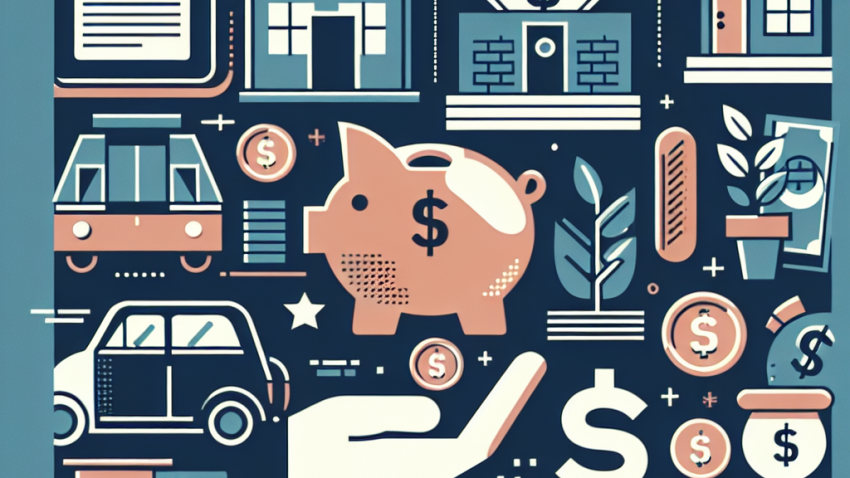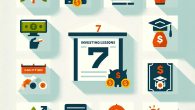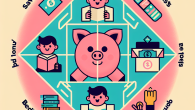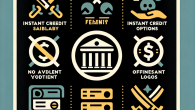
LISA vs Stocks & Shares ISA: Which Helped Me Reach My House Deposit Faster?
How to Turn Your Budget into a Vision Board for Financial Independence
If the words “budget” make your eyes glaze over and your soul momentarily leave your body, you’re not alone. I used to think budgeting was a masochistic spreadsheet marathon created only for accountants and people who cut coupons with military precision. But hear me out: what if budgeting wasn’t about restriction, but about freedom? And what if your budget could be more like a vision board—a living blueprint of your future dreams and financial independence?
Hi, I’m Rachel Simmons. I’m a financial coach, investor, self-proclaimed spreadsheet addict (reformed), and firm believer that your budget should reflect your life—not the other way around. Ready to take control of your finances without sucking the joy out of your Chai lattes and weekend hobbies?
What Is a Vision Board Budget?
Let’s start with a rebrand. Instead of thinking of your budget as a list of “no”s, think of it as a vision board—a strategy for how you want your money to serve your goals, values, and yes, your desire to retire before you’re 70 and living off lukewarm oatmeal.
A vision board budget does three things:
- Aligns your spending with your values
- Clarifies your short- and long-term goals
- Acts as the financial map to your version of freedom
Start with What Financial Independence Looks Like to You
Before we get into the numbers, let’s get dreamy. What does financial independence (FI) look like to you? Is it working remotely from Bali, opening a dog sanctuary, or simply not panicking every time your car makes a weird noise? For me, it was the peace of sipping coffee on my porch at 10:00 a.m.—on a Tuesday.
Write down your FI vision. Be specific. Here are some prompts to get your gears turning:
- What time do you wake up in your financially free life?
- What kind of work are you doing—if any?
- Where are you living?
- Who are you with, and what are you spending money on?
Now let’s translate that into a roadmap. That’s where our budget comes in.
Track Where Your Money is Actually Going
This part can be uncomfortable, like catching a candid photo of yourself chewing. But believe me, awareness is power. You can’t direct your money if you don’t know where it’s currently marching off to.
For one full month, track everything you spend. Use an app, a spreadsheet, or even go analog—whatever makes you consistent. Don’t judge. We’re not here to roast yesterday’s Uber Eats mistake. Just observe.
When I Did This, I Discovered:
- I was spending $213/month on online subscriptions I forgot I had.
- My ‘miscellaneous’ category had turned into a black hole of impulse buys.
- I was tipping 30% at coffee shops out of guilt. Still do. No regrets.
Break Your Spending Into Categories That Reflect Your Goals
This is the heart of your vision board budget. Instead of basic categories like “Housing,” “Food,” and “Stuff I Bought at 2am,” let’s rename and rework your budget into categories that actually inspire you.
- Freedom Fund: This is money you invest or save toward financial independence.
- Security Net: Emergency fund, insurance, and anything that keeps Future You from panic googling “fast loans.”
- Daily Fuel: Rent, groceries, gas—necessities that keep you operational.
- Joy Spending: Travel, books, hobbies, plants you definitely won’t kill this time.
- Growth Money: Education, learning, side-hustle costs—investment in your skills.
Now assign percentages to each category based on your goals. For example, if financial independence in your 40s is a big deal for you, your Freedom Fund might get 30–40% of your income. Scale as needed.
Automate Your Choices
Let’s take human error (and temptation) out of the equation. Set up automatic transfers so your money goes directly to your priorities:
- Automatic investment contributions to your Roth IRA, 401(k), or brokerage account
- Automated savings for emergency or travel funds
- Bill autopay so you’re not paying late fees out of forgetfulness
This makes your dream-life funding happen quietly in the background—kind of like a financial fairy godmother without the glitter.
Perform a Monthly Joy Check-In
Here comes the part most budgets forget: asking if your money is actually making you happy.
Once a month, sit down with your finances and ask:
- Did I spend in a way that reflects my values this month?
- Are my financial choices moving me closer to my FI vision?
- Where did I feel stressed about money? Why?
- What spending brought me the most joy?
I call this the conscious finance moment. It’s where you reconnect with the why behind your habits. It prevents burnout and keeps the FIRE (Financial Independence, Retire Early) dream alive.
Expected Challenges (and How to Slay Them)
Let’s be real. You’re going to hit roadblocks. Here’s what to expect and how to navigate like the budgeting ninja you’re becoming.
1. Lifestyle Creep
You get a raise and suddenly your sushi orders get fancier. Beware the siren song of more income, more spending. Redirect those golden coins straight into your Freedom Fund.
2. Comparison Chaos
Everyone online seems to retire at 32 in a hammock. That’s their lane. Stay in yours. Pace beats perfection every time.
3. Impulse Gremlins
Create a waiting list. Any purchase over $50 must wait 48 hours. Nine times out of ten, you’ll forget you even wanted it.
Final Thoughts: Your Budget is Your Superpower
You don’t need a six-figure job or a PhD in economics to reach financial independence. What you need is clarity, consistency, and a plan that inspires you. When your budget becomes a reflection of what truly matters, you stop seeing it as a cage—and start seeing it as a roadmap to the life you’ve always wanted.
Your budget doesn’t control you. It frees you.
Now go build that vision—and make your money work as hard for you as you work for it.
Need help getting started? Reach out via our contact page, or learn more about us and our mission to help you build a freedom-based financial future.









Leave a Reply